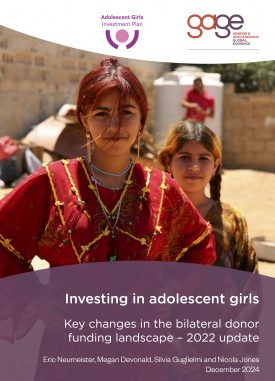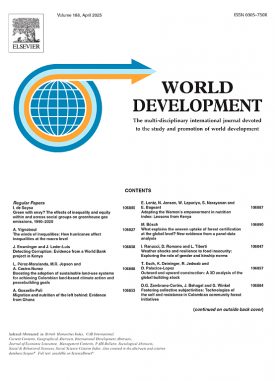This rapid country evidence review brings together key evidence on the effectiveness of interventions seeking to support the capability development of Nepali adolescent girls (aged 10-19). Produced to feed into the design of GAGE’s longitudinal impact evaluation and as a resource for researchers, programme designers and policy makers, this mapping draws on 56 impact studies and evaluations. As a living document to be updated as necessary, it lays out current evidence on “what works” to support girls’ education and learning; bodily autonomy, integrity and freedom from violence; sexual and reproductive health, health and nutrition; psychosocial wellbeing; voice and agency; and economic empowerment.
Our mapping found that of the examined studies, only eleven could be considered rigorous. In addition, some geographical regions were over-represented. Most critically, nearly all studies had short time frames—and were conducted soon after projects ended — and few delineated between different age groups to ascertain whether some types interventions work best for younger versus older girls or adolescent girls versus young women.
Our review concluded that in many ways Nepal’s programming space is comparatively unique. Most importantly, it has been home to thousands of child clubs since the 1990s. These have been found by NGOs to be an excellent venue for reaching young people at scale, albeit in a way that is often too siloed from adult-centred programming. On the other hand, Nepali programming — even that meant for women — has rarely tackled gender-specific issues head-on. This has meant, for example, that even as adolescent girls have been provided with spaces to develop friendships and practise decision-making, issues such as child marriage have remained more tangential.
Suggested citation
Stavropoulou, M. and Gupta-Archer, N. (2017) Adolescent girls’ capabilities in Nepal: the state of the evidence on programme effectiveness. London: Gender and Adolescence: Global Evidence. (https://www.gage.odi.org/publication/adolescent-girls-capabilities-nepal-state-evidence-programme-effectiveness/)


